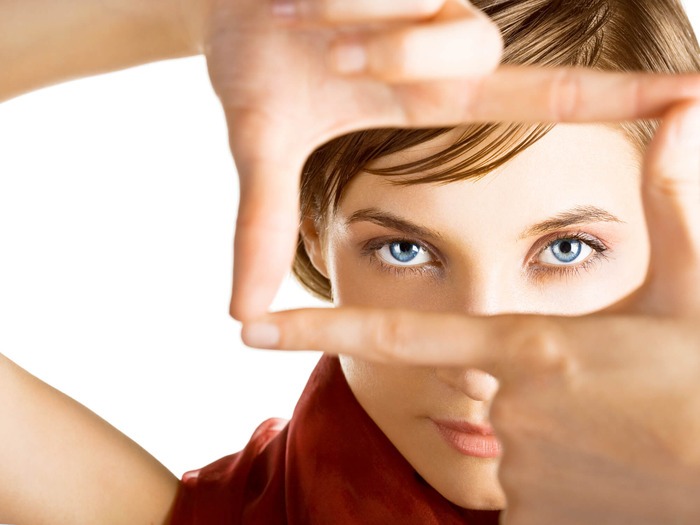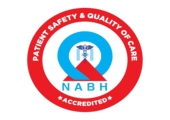Opt for the best lens for maximum visual advantage

The eyes are among the most important of all sense organs. 80% of the information our brain receives is through our eyes. Ensure that you take the time, effort, and money to buy a good pair of spectacle lenses. Remember, it’s the spectacle lenses that you look through and not the frame. Ensure that your lenses are hard-coated for increased scratch resistance. Anti-reflective coating helps the maximum amount of light to enter our eyes. Unlock the secrets to radiant eyes and clear vision throughout this article about essential tips for healthy eyes.
Tips for Healthy Eyes
Exercise your eyes regularly
During work, take small breaks to do simple and easy exercises. Begin by blinking your eyes several times. While you keep your eyes closed, roll your eyeballs both clockwise and anticlockwise and take a deep breath. Gradually open your eyes while releasing your breath. This exercise lasts for a minute and can be repeated two to three times before getting back to work. It serves as a good workout for the eyes.
Look away from the system
While working for long hours, look at distant objects either in your office or outside. Looking at a distant object and then returning to your task helps your eyes focus better. Taking such visual breaks for about five to ten minutes every hour is helpful to the eyes.
Palming the eyes
Sit straight at your workstation and rub your palms against each other till you feel them become warm. Then, lightly cup your eyes with your palms and relax for 60 seconds. Count the seconds in your mind. Repeat this exercise two to three times whenever your eyes feel tired, or as often as you want. The warmth of your palms helps soothe and relax tired eyes. While palming, you can either rest your elbows on your desk or keep away from the desk and cup your eyes. Both ways are fine.
Splash water on your face
During breaks, splash water on your face while closing your eyes. This has an overall relaxing effect and helps you feel refreshed. But frequent washing of eyes is not good.
Take a walk in the open
Take a stroll outside your office for a few minutes in between your work. This will give your eyes a much-needed break and get them some fresh air, try to be in the midst of nature, if possible.
Use tea bags
Keep two used tea bags in the refrigerator before you leave for work. Once you are home, place the tea bags on your eyes for a few minutes as you relax. This not only soothes tired eyes but also reduces puffiness.
Drink a lot of water
Drinking plenty of water helps reduce puffiness. When a person is dehydrated, especially in an air-conditioned office, the body starts storing water as a defence mechanism. This adds to puffiness around the eyes.
Eat Healthy
Vegetables are a great source of nutrition for the body. Incorporate Vitamins A, C, and E on a daily basis; eat citrus fruits, green leafy veggies, tomatoes, spinach, poultry, and dairy products. Instead of having a bag of chips, pack a box of chopped carrots, cucumber, and fresh fruits and munch in-between meals at the office.
Know your contact lenses
Ideally, a person who uses contact lenses should wear them for not more than 10-12 hours a day and occasionally for 14 hours a day. Never wear your contact lenses while swimming. The pool water houses various micro-organisms as there are several people using it. This may lead to fungal infections in the eyes. In addition, the chlorine in the water can damage your contact lenses. Lenses are like sponges, making them susceptible to attracting dirt.
Do’s and don’ts for your eye care
DO’s :
Visit your doctor regularly for an eye check-up
One should ideally visit their ophthalmologist once a year, but if there is a problem with your eyes, visit sooner, In addition, before buying an eye-care product such as eye drops, always check the expiry date and don’t forget to check the prescription. Once an eye drop bottle is opened, use it within a month’s time of opening.
All children need one general eye check-up before starting schooling. Many blinding eye diseases can be prevented by identifying them at an early age.
Wear anti-glare glasses while driving or at work
Anti-reflective lenses are mainly used for focused light — such as full-beam car headlights — and serve well for night driving. These can also be used while working on the computer to help reduce the strain on your eyes.
Wear protective eye gear
While driving, wear protective eye gear — especially if you are wearing contact lenses (for night driving) or sunglasses with UV protection (for day driving).
Eyewear for children
Always ensure that children wear plastic lenses, which will withstand the shocks of normal childhood accidents like falling off a bike, or getting hit with a ball, etc. Children also spend a long time on the computer so anti-reflective lenses are the best option for them.
DONT’s :
Smoking and alcohol intake
Smoking and alcohol consumption is bad for the overall health of an individual. It causes irreversible optic nerve damage if taken either alone or combined. As both nicotine and alcohol are nerve toxins, they affect the nerves in the long run. Over a period of time, this can lead to poor or weak eyesight.
Exposure to the sun
Sun exposure has been linked to cataract formation and, possibly, macular degeneration. And not just any old tinted glasses will help. To protect the eyes from harmful ultraviolet (UV) rays, make sure your regular glasses and sunglasses have 100% UV protection. That is completely separate from any tint. The fact is that you can have clear lenses with a UV coating that will protect you from the harmful rays of the sun.
Being healthy is a personal choice and one has to work hard at it. A balanced diet, regular sleep habits, a balance between work and rest, and adequate, regular exercise — all play a vital role in restoring our health and helping us maintain good health and good eyesight.
Contact lens
Never sleep with contact lenses. It can cause serious eye injury
Neglecting a squint
A squint should not be left thinking that it is not an abnormality. It can cause one-eye blindness. Squint in a child is considered to disappear with growing age. THIS IS WRONG. If not treated at an early age can cause Lazy eye and one-eye blindness. Squint ( maalagannu, in Kannada ) happens due to eye muscle weakness or one eye vision defects or due to spectacle numbers
Cure for Squint
Nearly 30 percent of squint patients need just eye exercises. Nearly 30 percent of squint patients can be treated with spectacles and only one-third of squint patients need surgical treatment.[/vc_column]
Some more helpful information regarding our eyes:
- A Cataract is the opacity of the natural lens of the eye. It is not external growth. Cataract causes blurring of vision, difficulty in driving, glare at night, and sometimes frequent change of spectacle numbers.
- You can say goodbye to glasses and contact lenses by having laser correction, called LASIK. It is a simple walk in – walk out procedure. It is painless and takes just a few minutes. It is a very safe and successful treatment. Many people have benefited immensely from this procedure. The suitability of the eye is the most important factor for the success of LASIK.
- Difficulty in seeing small print and mobile numbers is common at 40 years. This is not a disease. This is a natural process of eye aging and is called Presbyopia. Progressive glasses or varifocal glasses give the best benefit and do not show lines on the glass. You can hide your age !!! But just getting a prescription for the glasses is not enough.
- At 40, a thorough eye check-up needs to be done to detect Glaucoma – a silent thief of eyesight. It damages the optic nerve. It generally starts after 40 and may be hereditary. Glaucoma can cause irreversible blindness, often called tunnel vision or tubular vision. If detected early, it can be well controlled with eye drops. Get your eye pressure and optic nerve examined to rule out the presence of this condition.
- In our country, out of 100 blind people, 62 have cataracts. Cataracts need not be mature to be operated on. With the latest technology called MICS, success is good and recovery is fast.
- In cataract surgery, the doctor makes a very tiny pinhole opening into the eye and dissolves and removes the opacity. Later a foldable Intra Ocular Lens is placed. This is done in just 5 to 7 minutes
- For the good health of the eye, a normal tear layer or moisture on the eye is very important. This is ensured when we blink our eyes. A normal eye blinks more than 10,000 times per day, about 12 to 14 times per minute
- 12 to 14 times blinking per minute is essential for normal vision and comfort. Our computer professionals keep staring at monitors and blink on an average 6 to 8 times only! This leads to dryness and Computer vision syndrome or CVS.
- CVS can be treated by ensuring proper blinking and using lubricating eye drops. This will enhance the comfort of the eyes. Anti-glare coating on spectacle lenses will improve the quality of vision and reduce eye strain.
- Spectacle wearers should have eyes tested at least once every year. Many people have eyes tested only when spectacles are lost or broken!!!
- Eye doctors, called “Ophthalmologists” check the complete health of eyes in addition to spectacle numbers. They are qualified surgeons too. Just spectacle number checking is not equal to a comprehensive eye examination done by an ophthalmologist.
- Everything about the eye is microscopic and precision-oriented…..even the spelling of ophthalmology. It is “ophthalmology” and not ‘ophthalmology, have you noticed?






